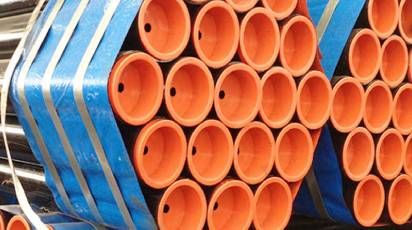Before 2014, the proportion of carbon steel seamless oil pipe in steel pipe production has been around 37%. In 2014, the scale of China's seamless steel pipe production increased year-on-year, and the proportion of total steel pipe production increased to 38.38%. The incremental scale of seamless steel pipes accounts for about 89% of the overall incremental scale of steel pipes, indicating that the growth of China's steel pipe production scale in 2014 mainly benefited from the increase in demand for seamless steel pipes. However, with the continuous improvement of welded pipe production technology, the quality of welded pipe products has been greatly improved. In 2015, seamless steel pipes can be gradually replaced in some industries, which makes the output scale of seamless steel pipes decline in the trend of increasing the overall scale of steel pipe production. .
Seamless steel tubes have a wide range of uses. General purpose seamless steel tubes are rolled from ordinary carbon structural steel, low alloy structural steel or alloy structural steel, with the largest output, and are mainly used as pipelines or structural parts for transporting fluids. .2 It is divided into three categories according to different uses: a. Supply according to chemical composition and mechanical properties; b. Supply according to mechanical properties; c. Supply according to hydraulic test. For steel pipes supplied according to categories a and b, if they are used to withstand liquid pressure, a hydraulic test is also required. 3. Special-purpose seamless pipes include boiler seamless pipes, chemical and electric power, geological seamless steel pipes and petroleum seamless pipes.

Carbon Steel Seamless Oil Pipe
Seamless steel pipe has a hollow cross-section and is widely used as a pipeline for transporting fluids, such as pipelines that transport oil, natural gas, gas, water and certain solid materials. Compared with solid steel such as round steel, steel pipe is lighter in weight when it has the same bending and torsional strength, and it is an economical section steel.
Widely used in the manufacture of structural parts and mechanical parts, such as petroleum drill rods, automobile transmission shafts, bicycle frames, and steel scaffolding used in building construction to make ring-shaped parts, which can improve material utilization, simplify manufacturing processes, save materials and processing Man-hours have been widely used to manufacture steel pipes.
From 2013 to 2014, there were many projects in the global oil drilling and chemical industries such as China and China. The power industry investment and real estate investment increased, which stimulated the growth of seamless steel pipe production. Since 2014, crude oil prices have been hovering at a low level. The scale of demand for seamless steel pipes in chemical, chemical and other industries has decreased, and the overall production scale of seamless steel pipes has declined.
While the overall production scale of steel pipes increased in 2015, the output of seamless steel pipes fell instead of increasing. It can be seen that the overall competitiveness of seamless steel pipes has declined. Many downstream industries have actively tried and used on the premise of meeting their own needs. Welded pipe to replace seamless steel pipe.
